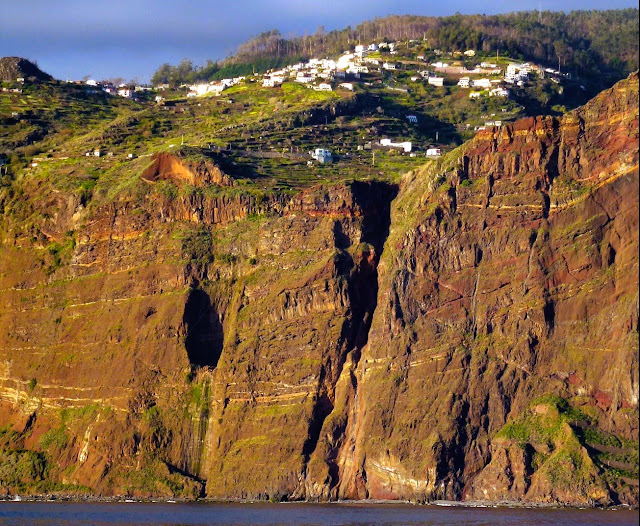SERRA DE ÁGUA
(PARISH OF RIBEIRA BRAVA MUNICIPALITY)
32° 43' 39" N 17° 01' 31" W
Serra de Água is a Portuguese parish in the municipality of Ribeira Brava, with an area of 24.16 km² and 1,049 inhabitants (2011). Its population density is 43.4 inhabitants/km². It is located at latitude 32.71667 (32°43') North and longitude 17.033 (17°2') West, at an altitude of 640 meters. Serra de Água has a road that connects the north of Calheta and Funchal. The main activity is agriculture.
Serra de Água has a school, sports court, church, and market.
Today it is a popular resort, being visited by many tourists. It is also known for its flowers and landscapes,
Geography
The parish is situated in the southwest part of the island, encircled by dense vegetation and high mountains, specifically the Pico da Cruz, Pico do Cedro, and Pico Grande. The lands are irrigated by numerous ravines, such as the Ribeira da Fajã das Éguas, Ribeira do Poço, and Ribeira da Serra de Água (which are affluents of the Ribeira da Ribeira Brava, the main waterway in the municipality).
Serra de Água is 8 kilometers (5.0 mi) from the municipal seat of Ribeira Brava, connected by a regional road. It is bordered on the west by Tabua, São Vicente to the northwest and northeast; Ponta Delgada in the northeast; Curral das Freiras and Campanário to the east, while Ribeira Brava is to the south.
Economy
Encircled by tall mountains, the parish is located in a valley and supported by diverse ravines, making agriculture difficult to sustain. Saw-milling was one of the first industries to establish itself, owing to the availability of wood and forest.
Yet, agriculture is the predominant economic activity in the civil parish, a function that has persisted on a subsistence basis since the settlement of Madeira.[3] Around 60% of the population is involved in cultivation, with 80% of these lands taken by small parcels, usually for self-consumption.[3]
Secondary industries are primarily hostelry and civil construction, which occupy a considerable portion of work placements
Encumeada Viewpoint
32.754558, -17.020038
Situated on a high point of the island, the Encumeada Viewpoint allows you to observe the north and south coasts of Madeira. This panoramic view, reveals to visitors a global perspective of this Atlantic island.
This observation site can be found on the crest of the mountain range that runs through the interior of Madeira. It is situated at an altitude of 1007 meters, which allows visitors to enjoy an open view of the surrounding landscape.
Standing out in the landscape framing the Encumeada Viewpoint are the deep valleys of Ribeira Brava, on the Island's south coast, and São Vicente, on the north coast. The green colors of the forest covering the mountains reign supreme on whichever side you may look to. The mountain peaks are often just above the clouds - a truly memorable visual spectacle that is worth photographing.
Finally, you can take advantage of the visit to the Encumeada Viewpoint to walk along some of the pedestrian trails in this region or to get to know Serra d'Água, a parish with a vast natural heritage, which is surrounded by the various mountain peaks in the area and a dense forest.
Details
The Encumeada Viewpoint, situated at an altitude of 1007 meters, provides a panoramic view of the island with an open view over the north and south coasts.
Return to mainland Portugal and
to the Azores and Madeira islands















































